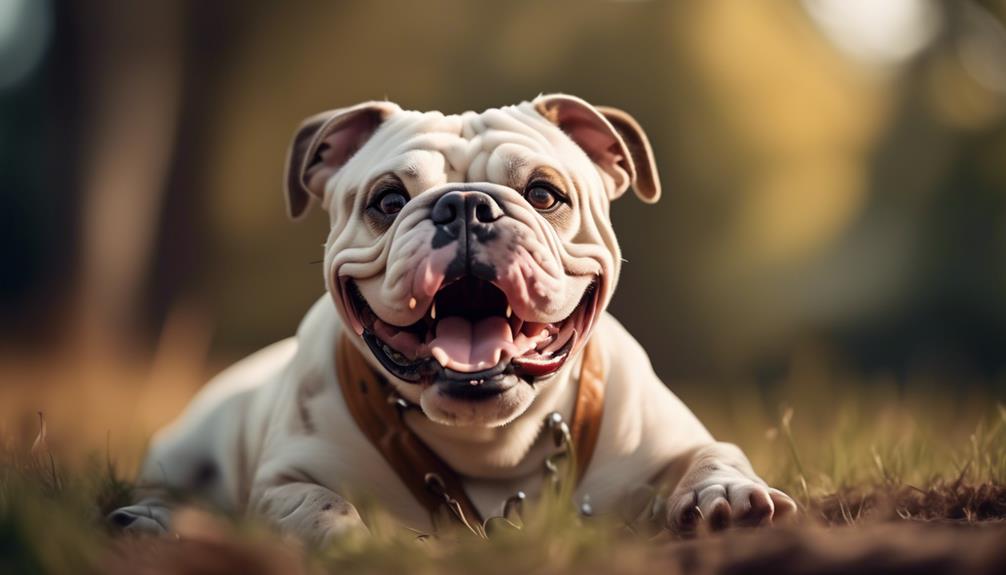
Are you curious about the Valley Bulldog mixed dog breed? Perhaps you’ve seen pictures of these adorable pups and now you want to learn more about their characteristics and facts.
Well, you’re in luck! In this discussion, we will take a closer look at the Valley Bulldog and uncover interesting details about their temperament, size, and appearance.
But that’s not all – we’ll also explore their compatibility with children and other pets, as well as any health considerations you should be aware of.
So, if you’re ready to discover what makes the Valley Bulldog such a unique and fascinating breed, then let’s get started!
Key Takeaways
- Valley Bulldogs are well-suited for apartment living due to their adaptability and size is not the sole determinant for apartment suitability.
- When choosing a dog for an apartment, factors such as energy levels, quietness, and good behavior towards neighbors should be prioritized.
- Valley Bulldogs have specific weather tolerances, being vulnerable to both cold and overheating, and need to live indoors in extreme temperatures.
- Valley Bulldogs are affectionate and make great family pets, but their level of affection can vary within the breed, so it’s important to meet and interact with the individual dog to determine their level of affection.
Adaptability and Apartment Living
Valley Bulldogs are well-suited to apartment living due to their adaptability and size. While size alone shouldn’t be the sole determinant for apartment suitability, Valley Bulldogs possess qualities that make them ideal for apartment dwellers. They’ve moderate energy levels and don’t require excessive amounts of space to be happy.
When considering a dog for apartment living, it’s important to prioritize qualities such as quietness, low-energy, and good behavior towards neighbors. Even certain small dog breeds with higher energy levels can still thrive in apartments if provided with the proper exercise and mental stimulation.
See another Dog breed profile.
Vizsla Dog Breed
Weather Tolerance
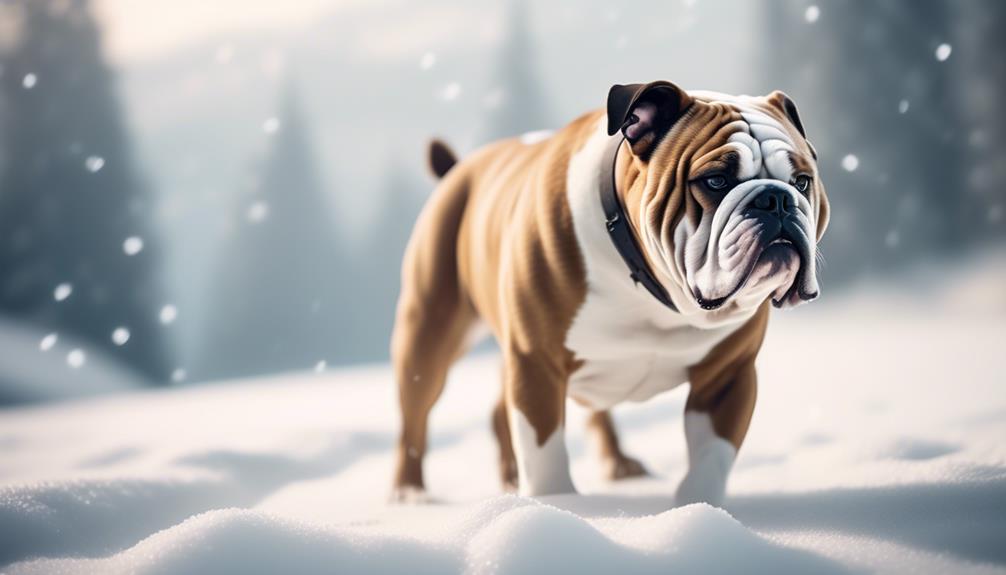
When considering the weather tolerance of a Valley Bulldog, it’s important to take into account their coat type and body composition. Here are four key factors to consider:
- Coat type: Valley Bulldogs with short coats are more susceptible to the cold. They lack the insulation provided by longer fur, making them vulnerable in cool climates. It’s important to provide them with warm shelter and limit their exposure to cold weather.
- Body fat: Dogs with little body fat are also more vulnerable to the cold. The fat layer acts as insulation, helping to keep them warm. Valley Bulldogs with low body fat should be kept indoors in colder climates to prevent hypothermia.
- Heat sensitivity: Breeds with short noses, like the Valley Bulldog, are more prone to overheating. They have difficulty regulating their body temperature in hot weather. It’s crucial to keep them indoors on warm or humid days and avoid strenuous exercise during these conditions.
- Exercise caution: When exercising your Valley Bulldog in hot weather, be cautious and mindful of their heat sensitivity. Provide plenty of water and avoid exercising them during the hottest parts of the day.
Friendliness and Compatibility With Families
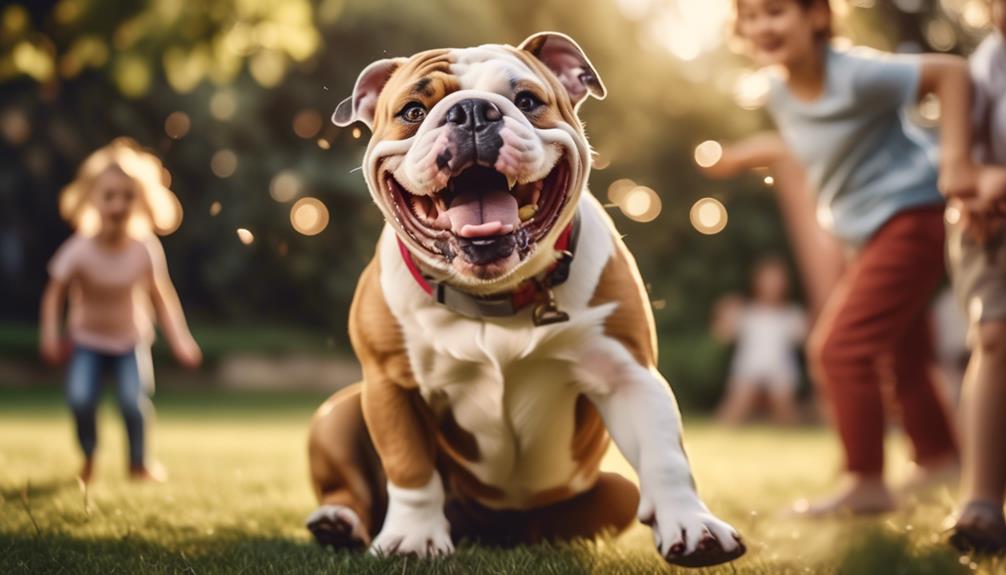
One important aspect to consider when choosing a Valley Bulldog as a family pet is their friendliness and compatibility with families. Valley Bulldogs are known for their affectionate nature and their ability to enrich the lives of their owners. They’ve a deep sense of loyalty and unconditional love, which extends beyond play and cuddles. These dogs have the remarkable ability to sense their owners’ emotions and offer support and comfort when needed.
However, it’s important to note that not all Valley Bulldogs will be equally affectionate, as individual personalities can vary. To determine their level of affection, it’s recommended to meet and interact with the dog before making a decision. Some Valley Bulldogs may be more independent or clingy than others, so it’s important to find a dog that aligns with your family’s needs and preferences.
Valley Bulldog Characteristics
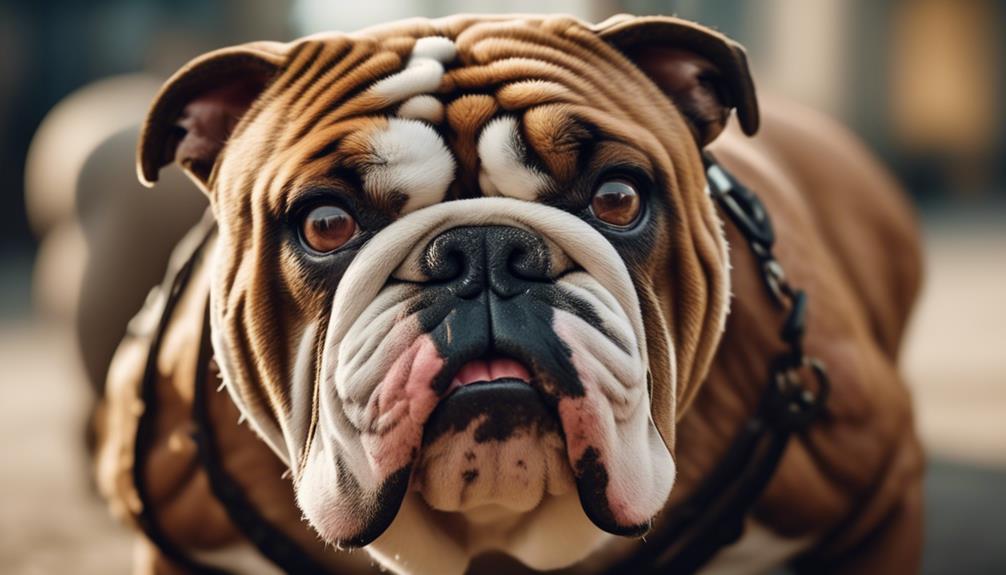
To better understand the Valley Bulldog as a family pet, it’s important to explore their unique characteristics. Here are some key traits of Valley Bulldogs:
- Mixed Breed: Valley Bulldogs aren’t purebreds but rather a mix of Boxers and English Bulldogs. This mix results in a unique combination of traits from both parent breeds.
- Size and Appearance: Valley Bulldogs are medium to large-sized dogs, typically weighing between 50 to 125 pounds. They’ve a height range of twelve to 25 inches at the shoulder. The size can vary depending on the dominance of the parent genes.
- Playful and Curious: Valley Bulldogs have a silly personality and enjoy human interaction. They’re curious and playful, making them great companions for active older children.
- Health Considerations: Valley Bulldogs may inherit health conditions from Boxers and English Bulldogs. Regular veterinary checkups, maintaining a healthy weight, and providing proper dental care are essential for their well-being.
Understanding these characteristics can help you determine if a Valley Bulldog is the right fit for your family.
Valley Bulldog Children and Other Pets
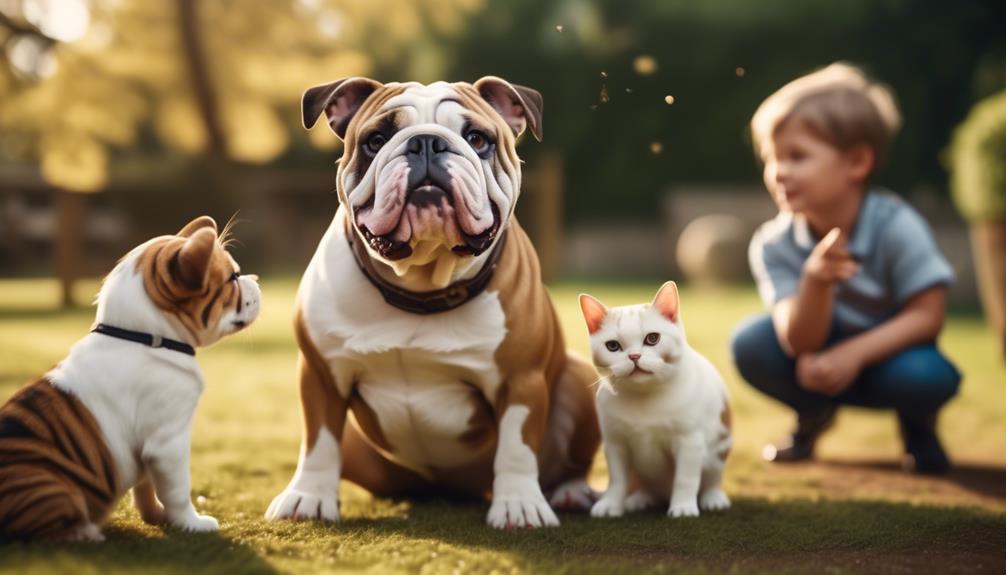
Valley Bulldogs are energetic and social dogs, making them great playmates for active older children and compatible with other pets in the household. However, they may be too rambunctious for toddlers and can accidentally knock them down during play. It’s important to always teach children how to approach and touch dogs, as well as supervise interactions between dogs and young children.
Valley Bulldogs have a playful nature and enjoy human interaction, which makes them well-suited for families with older children who can keep up with their energy levels. They can also get along well with other pets in the household if properly introduced and socialized from a young age.
Health Considerations

When considering the well-being of your Valley Bulldog, it’s important to take into account their health considerations. Here are some key points to keep in mind:
- Regular veterinary checkups: Valley Bulldogs may inherit health conditions from Boxers and English Bulldogs. Regular visits to the vet are crucial for early detection of any potential health issues.
- Common health problems: Skin issues and breathing difficulty are common concerns for Valley Bulldogs. It’s important to maintain a healthy weight and regularly clean between their skin folds. Dental care is also important, so daily teeth brushing is recommended.
- Importance of socialization: Early socialization plays a vital role in shaping a well-rounded and friendly dog. Enrolling your Valley Bulldog in puppy kindergarten and exposing them to different experiences can help with their socialization.
- Adopting from shelters: Some Valley Bulldogs end up in shelters or rescue groups, making adoption a great option. Check local shelters, Valley Bulldog rescues, or breed-specific rescues for adoption opportunities.
Frequently Asked Questions
What Are the Common Training Challenges Faced by Valley Bulldog Owners?
Common training challenges faced by Valley Bulldog owners include stubbornness and a tendency to be independent. They may require consistent and patient training methods to overcome these challenges. Positive reinforcement and early socialization are essential for their development.
Are Valley Bulldogs Good for People With Allergies?
Valley Bulldogs can be a good choice for people with allergies, as they have short coats that are easy to groom. However, it’s always recommended to spend time with the dog to see if you have any allergic reactions before making a final decision.
Do Valley Bulldogs Have a Strong Prey Drive?
Yes, Valley Bulldogs can have a strong prey drive. It is important to provide proper training and socialization from a young age to manage their instincts and ensure the safety of other small animals.
Are Valley Bulldogs Prone to Separation Anxiety?
Valley Bulldogs can be prone to separation anxiety. It’s important to gradually acclimate them to being alone, provide mental stimulation, and establish a consistent routine. Seek professional help if needed.
How Much Exercise Do Valley Bulldogs Need on a Daily Basis?
Valley Bulldogs need a moderate amount of exercise on a daily basis. Regular walks, playtime, and mental stimulation will keep them happy and healthy. Aim for around 30-60 minutes of activity each day.
Conclusion
In conclusion, the Valley Bulldog is an excellent choice for apartment living. Their adaptability and medium size make them well-suited for smaller living spaces. They’re friendly and compatible with families, including children and other pets.
With their affectionate nature and active personality, they make wonderful companions. By considering factors such as energy levels, behavior, and compatibility, you can ensure a harmonious living environment for both you and your Valley Bulldog.
So, if you’re looking for an apartment-friendly furry friend, the Valley Bulldog is a perfect choice.




